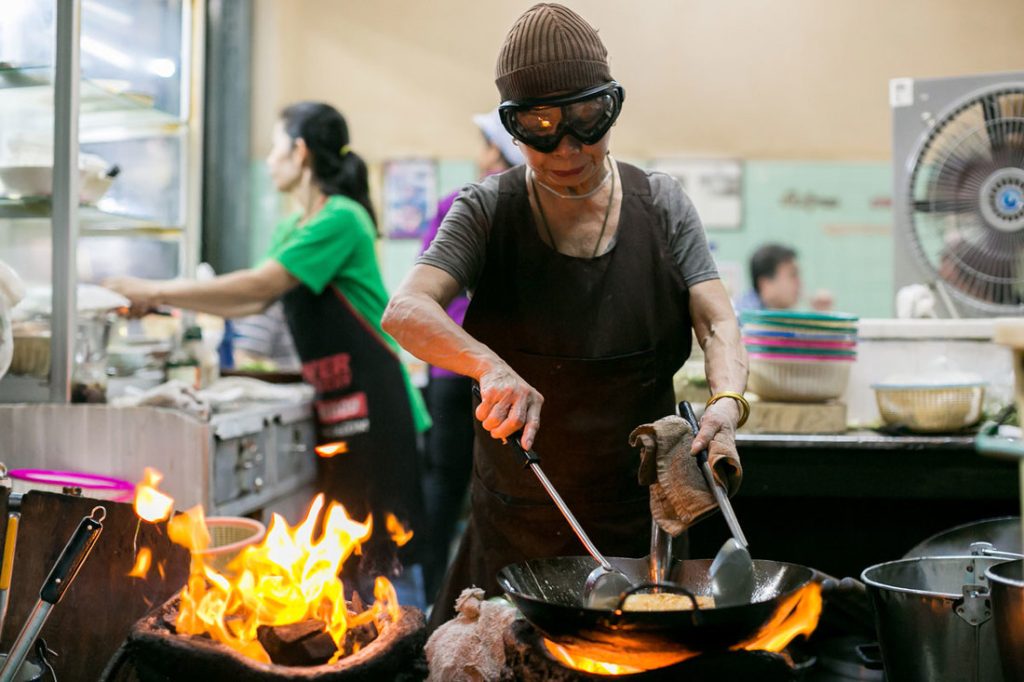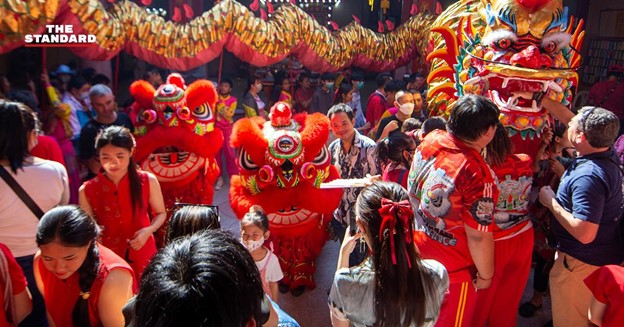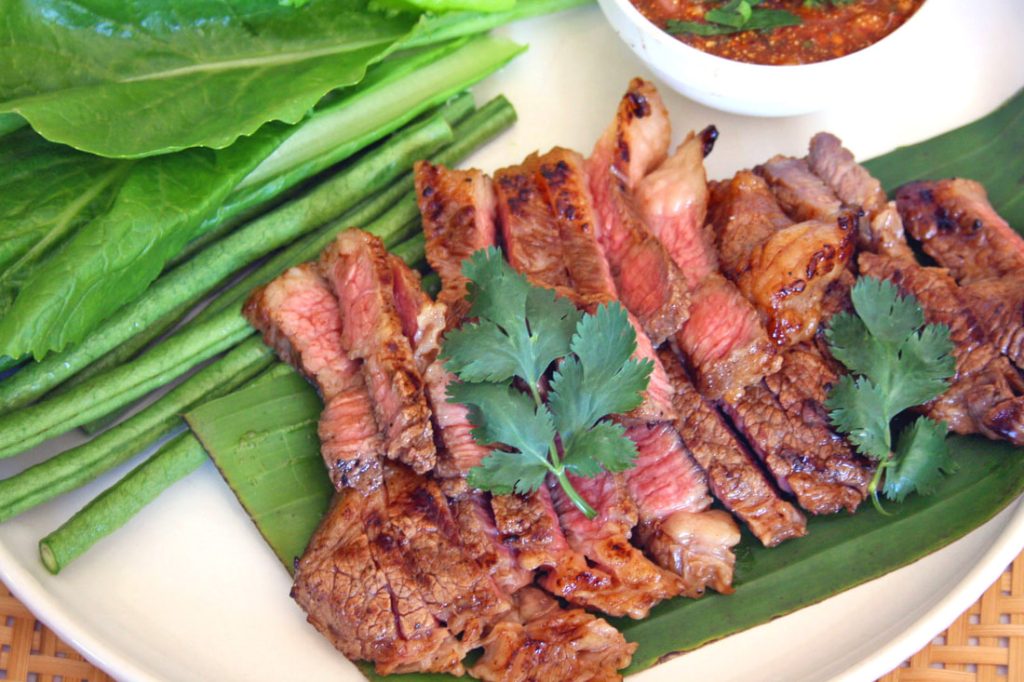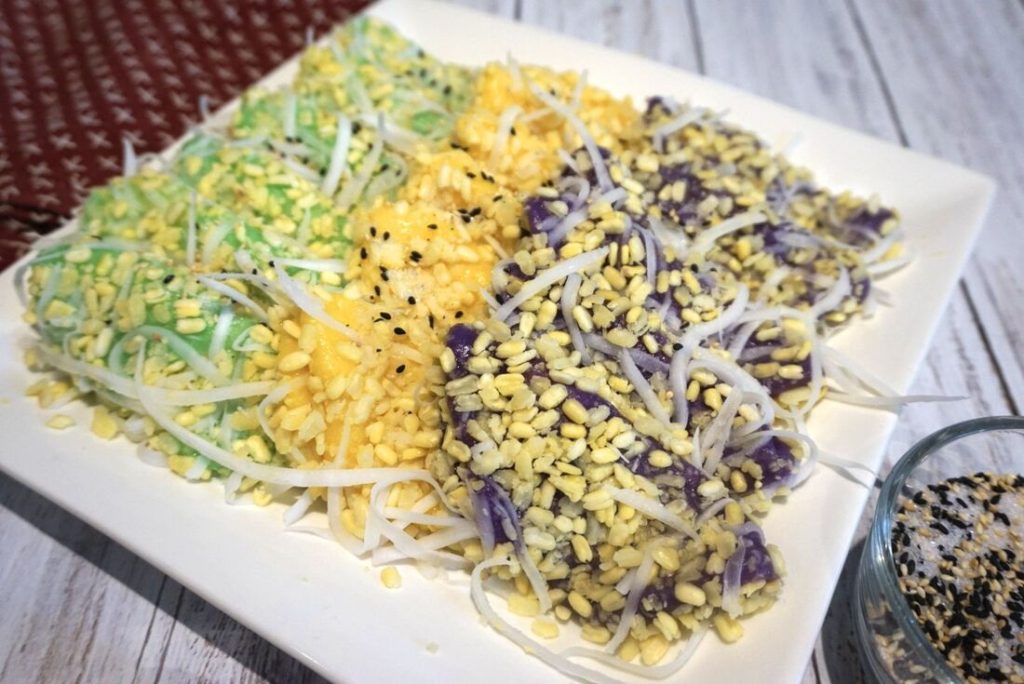Duel on elephant back was supposed to be the height of warfare at that time… It’s a bit like knights used to joust … so it’s very romantic to have an elephant duel
Elephants might be the much-loved symbol of Thailand today, yet in the past, they were used as instruments of war. In fact, a tradition of single combat on elephant back first emerged in Thai history in the 13th century during the Sukhothai period.
The origin of the elephant duel is still unknown but there is the possibility that the Thais and other Southeast Asian warriors adopted this practice from Sri Lanka.
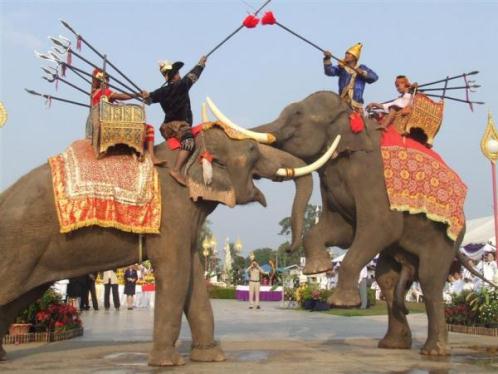
Naresuan, the Siamese prince who led the rebellion, bravely came forward on his war elephant and loudly challenged the Burmese to a duel. His heroic words were transmitted in the annals: “Whatever
is Our royal older brother doing standing in the shade of a tree? Come forth and let us fight an elephant duel for the honor of our kingdoms!”Thus the Thai prince shamed the Burmese crown prince into accepting a challenge. The Thai elephant, being in rut, went berserk and rushed towards the enemy. The Burmese crown prince slashed with his scythe, but Naresuan turned and avoided being hit. Naresuan slashed with his sword, hitting the Burmese prince’s right shoulder, and cutting deeply into his opponent’s chest. At this time, Naresuan’s elephant driver was hit and killed by an enemy bullet. Prince Naresuan’s brother, the future King Ekathotsarot, fought with General Mangcacharo and also won that contest. The Thai army then rushed forward, slashing and stabbing, forced the enemy to retreat in defeat, and pursued them until the Burmese were no longer on Siamese territory.
There’s around 10 different accounts of the incident and it’s important to state at the beginning that not one of these claims to be an eyewitness account,…… and these are all different, no two are the same and they differ about every single detail of the thing.
Then there’s the question of whether … it was a formal duel, whether Naresuan challenged the Burmese prince or in some accounts they just met in the middle of the battle and fought against one another.
More importantly there’s a question, big differences in how he is killed. [In] the mainstream version, Naresuan kills him with a sword. In other versions the Burmese prince is killed with a bullet.” – Chris Baker, Historian
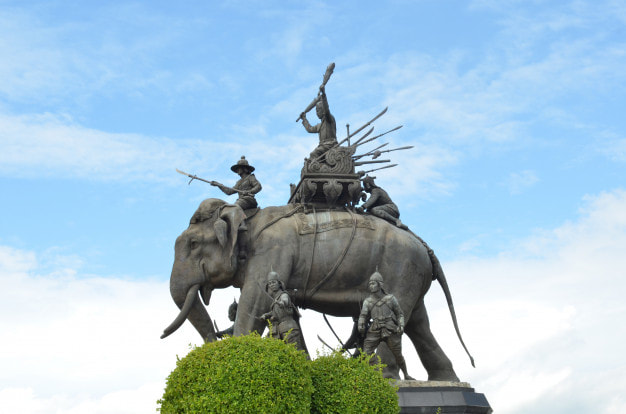
References
https://en.wikipedia.org/wiki/Naresuan
https://theculturetrip.com/asia/thailand/articles/the-legend-of-thailands-elephant-battle/
https://www.smithsonianmag.com/smart-news/thailand-drops-charges-against-historian-facts-duel-180967881/
http://www.khaosodenglish.com/news/international/2017/10/06/military-try-historian-doubting-16th-century-elephant-duel/
http://www.badassoftheweek.com/naresuan.html
https://www.nationthailand.com/opinion/30329016
http://www.siamese-heritage.org/jsspdf/2011/JSS_101_0c_Terwiel_WhatHappenedAtNongSaraiComparingIndigenousAndEuropeanSources.pdf
https://www.ajarn.com/blogs/john-quinn/the-battle-of-nong-sarai
https://www.thephuketnews.com/the-story-of-the-black-prince-62029.php
https://www.abc.net.au/news/2017-10-12/buddhist-sulak-sivaraksa–faces-lese-majeste-charge/9040540


